Time trials: 5 key points
Delko-Marseille-Provence
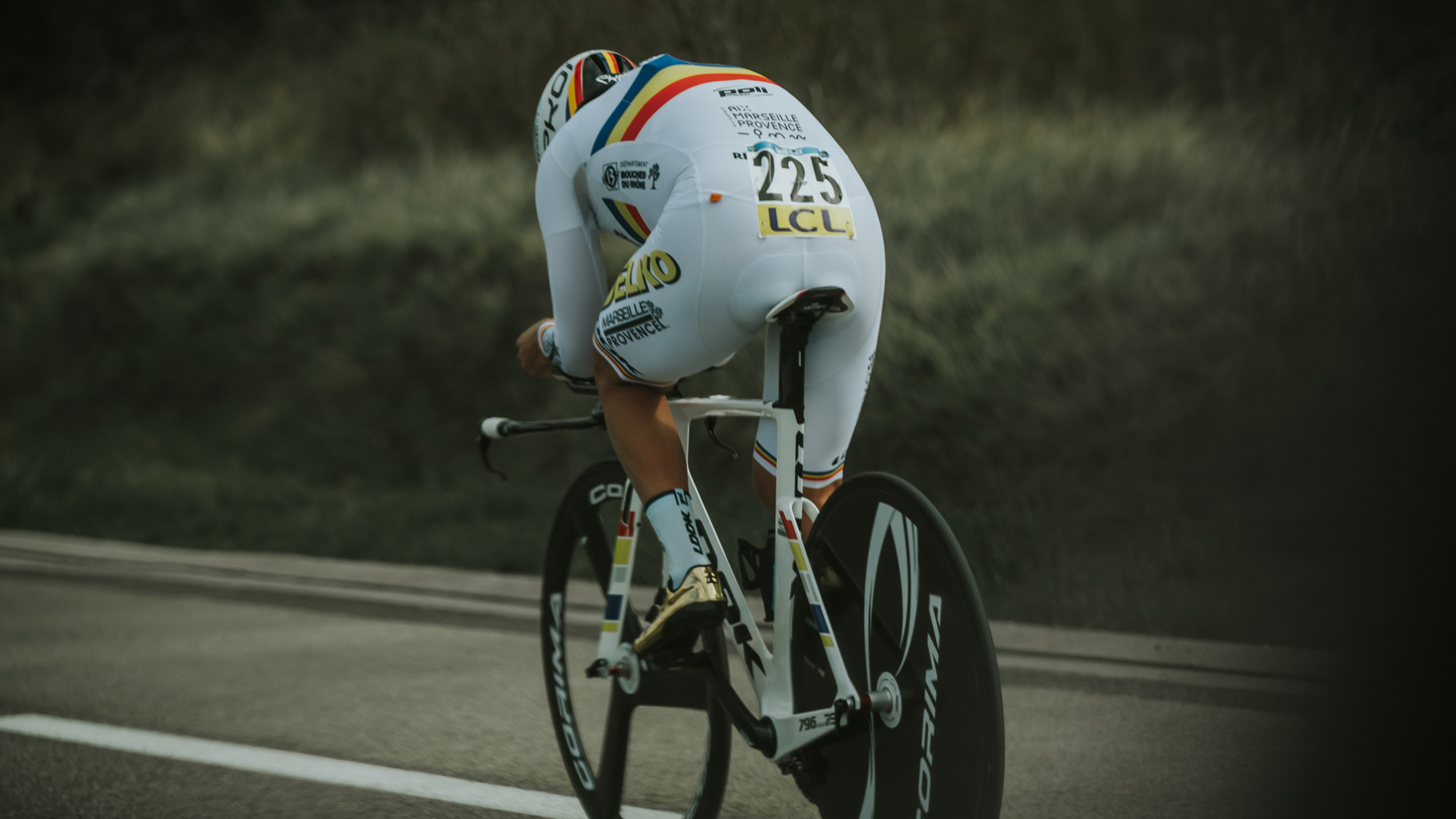
A difficult high-plateau race, Paris-Nice is perfect for world-class time trials. And time trials don't just require specific skills, but also a specific bike such as the 796 Monoblade RS. So, we've hooked up the Delko-Marseille-Provence team to see how they tweak their bikes and cyclists to perfection.
A two-wheeled beast that's accurate to the millimetre
Time trials kick off the race season, starting with the first stage in Alicante. The team starts off with an intensive postural analysis undertaken by specialists. For some cyclists, this session can last up to six hours. From adjusting the Aeropost seatpost and Kéo grips to the positioning of the eTap shifters on the Aeroflatsystem, everything is optimised according to the cyclist's morphology and their bike's specific features.
As Andy Flickinger, sports director at Delko-Marseille-Provence, explains, it's not just about the "morphology of the cyclists, but also the morphology of their bikes." All professional level equipment has certain demands and any change in posture leads to a metabolic change that requires the body to adapt. "But we trust our biomechanics experts and that has always paid off." continues Andy.
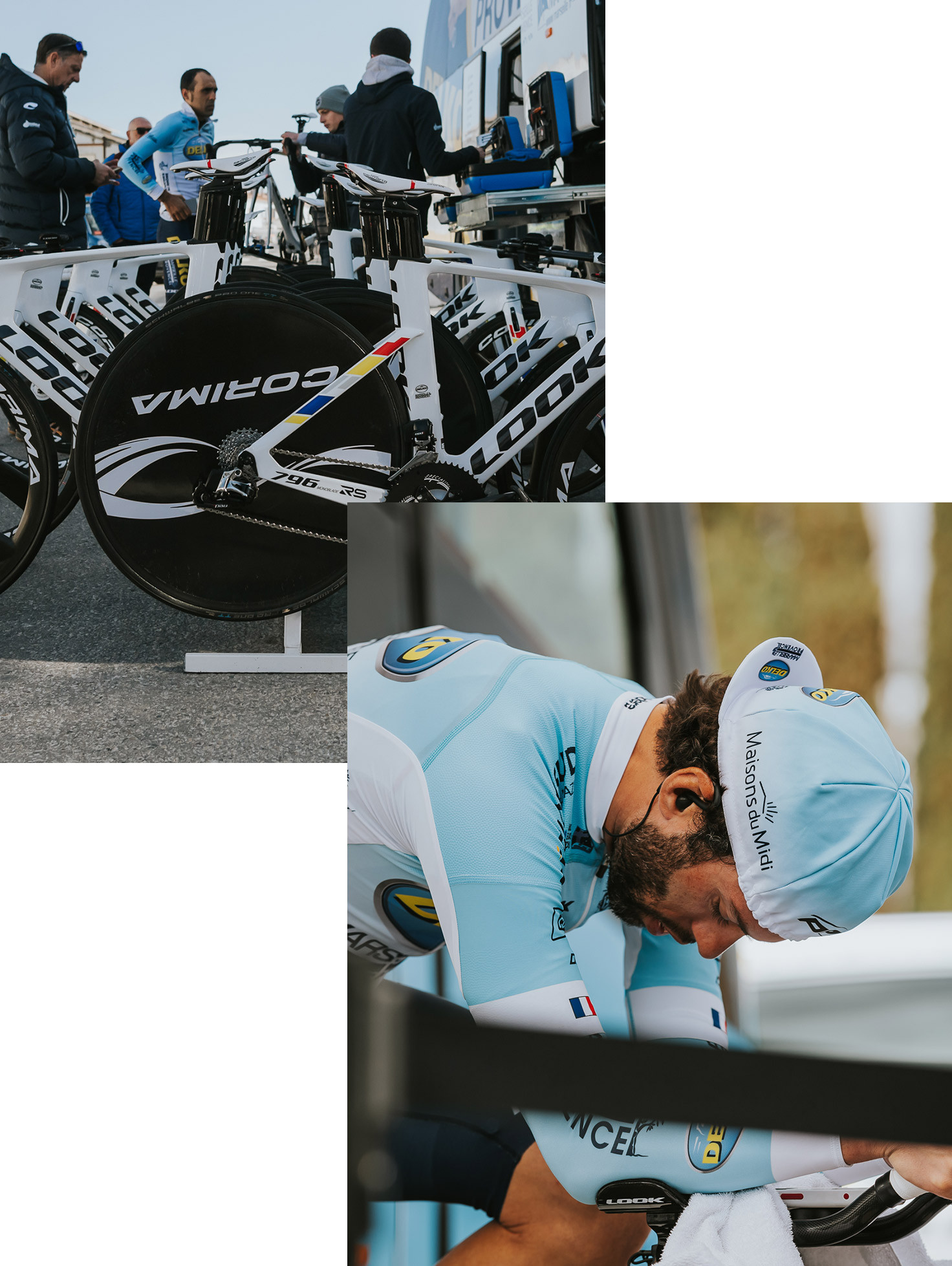
"It's not just about the morphology of the cyclists, but also the morphology of their bikes."
Revise any technical weaknesses
Having the most aerodynamic time trial bike is essential, but wind tunnel tests provide essential information. To get the best out of a bike, the cyclist must be able to hold a certain position that requires flexibility and core strength. Time trials are becoming rarer, so cyclists don't always get to train as they should and attacking an obligatory time trial stage can be a painful endeavour.
Exercise is obviously the best way to prepare, but it's also a great way to develop skills that are beneficial during other parts of a race. For example, if the cyclist needs extra power to break away during the final stage or needs to catch up after hitting a kerb. Having such top-level anaerobic capabilities is also extremely beneficial to climbers.
Rev up the engine
In Paris-Nice, the time trial is in the middle of the race, after a gruelling three days battling the wind. Switching from a stage that lasts several hours to a half-hour time trial puts a lot of strain on the body, which can respond by going into "protection mode". The cyclist needs to get into sprint mode.
The cyclists start with an hour of moderate-speed cycling, during which they can check out the course and perform any adjustments. They'll then rest for twenty minutes before continuing on a turbo trainer. In order to maximise their performance, they can analyse their pace via the power monitors on the Exakt pedals and their heart rate monitor. Cyclists start off with ten minutes at level i3 (jargon for level 3 intensity) before moving up to i4 for four minutes and cranking it up to i5 for the last minute. They then go down again to i3 to recover before raising their heart rate with 5 sets of 30/30 - thirty seconds of intense cycling and then thirty seconds of recovery.
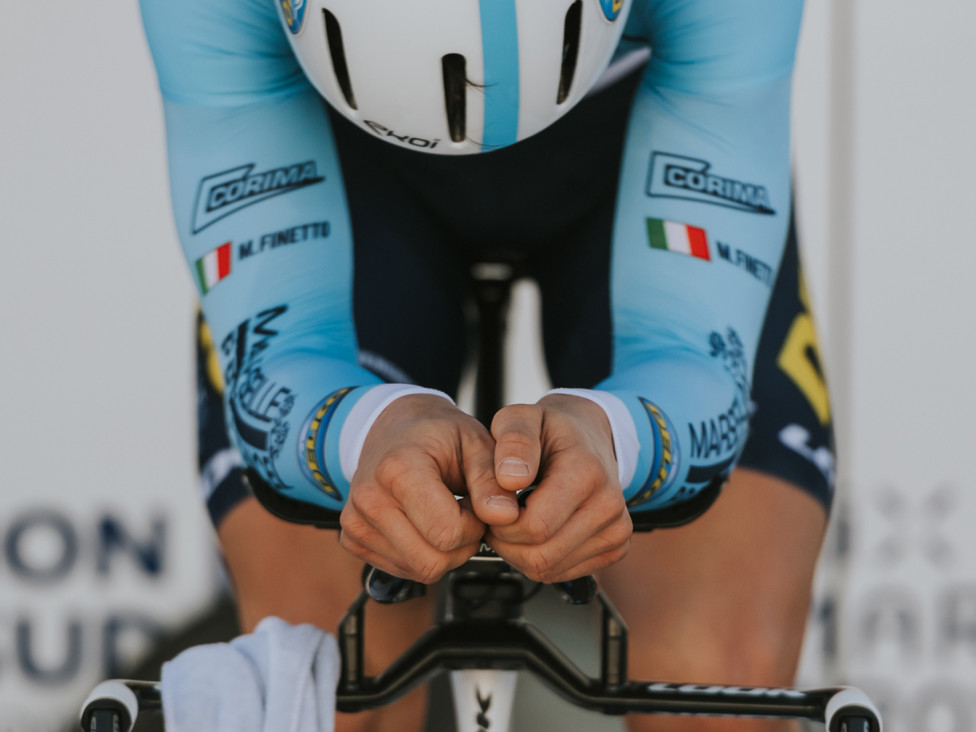
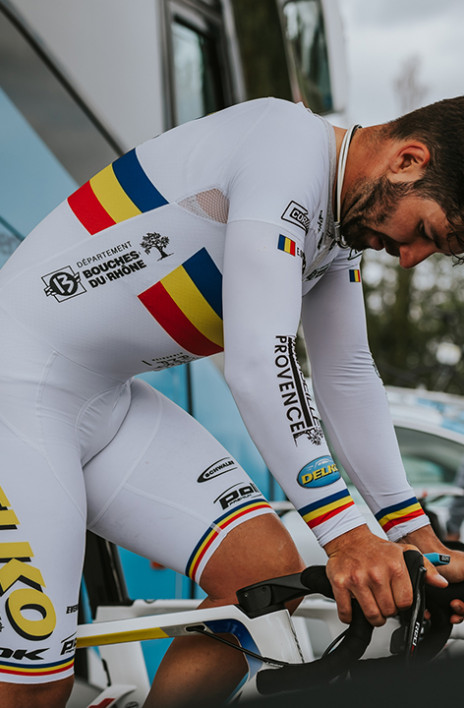
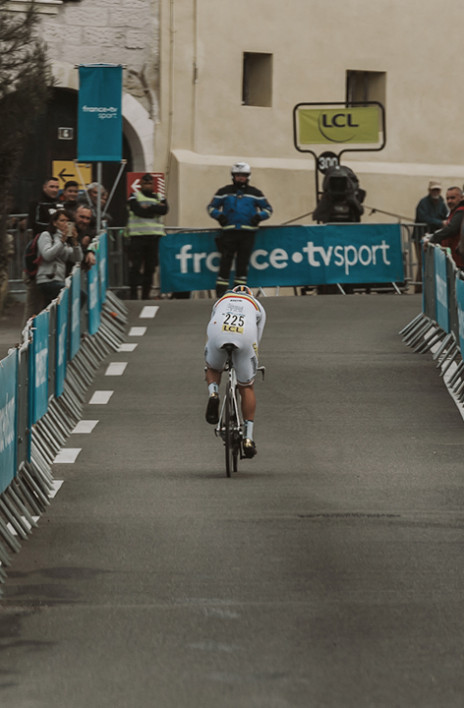
Let the others party
Time trials are a real highlight for cycling fans who turn up to watch a race. They're held over the course of an afternoon and between warm-ups, starts, finishes and recovery, there are hundreds of opportunities for cycling enthusiasts to approach and observe the cyclists and check out their gear. For sports directors, rather than comparing their bikes with those used by other teams, they tend to focus on their own team's psychology.
"With a specialist like Navardauskas for example, I'll ask him how his legs are feeling, if he has a tactic in mind and what he needs in terms of real-time voice communications. With someone like Romain Combaud, I'll be more present. I'll let him start, but if I see he's settled on a 55x14 gear ratio when I know he could be on 55x11, I'll intervene on the principle that we can see all variations from the car," explains Andy Flickinger before the first cyclists set off. "Time trials are gruelling. Apart from the body's position, an inappropriate gear ratio can cause added discomfort. Cyclists need to give their all and constantly question themselves. All the best time trial cyclists are masters of concentration. And this level of concentration requires a lot of effort."
"Time trials are gruelling."
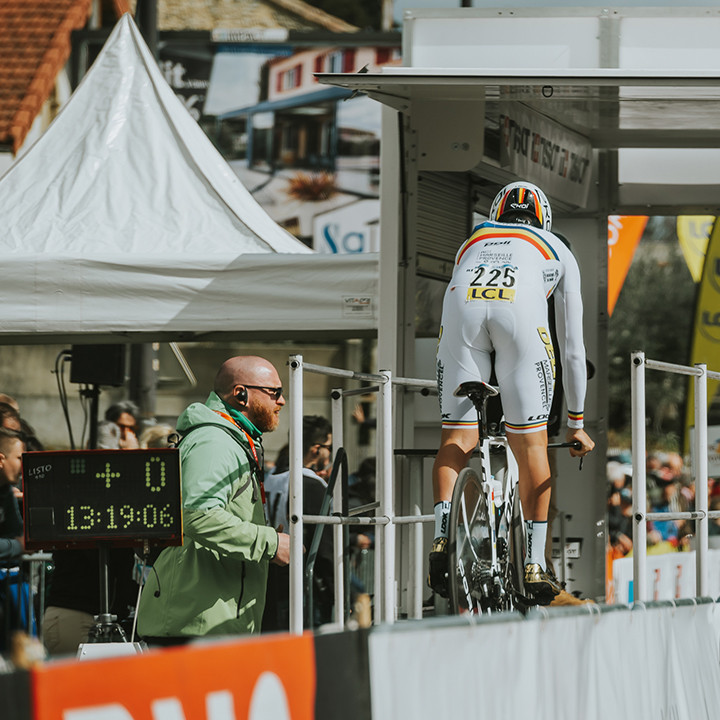
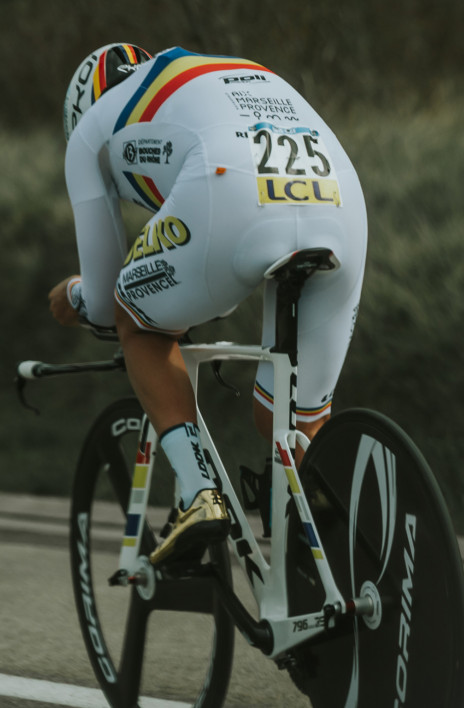
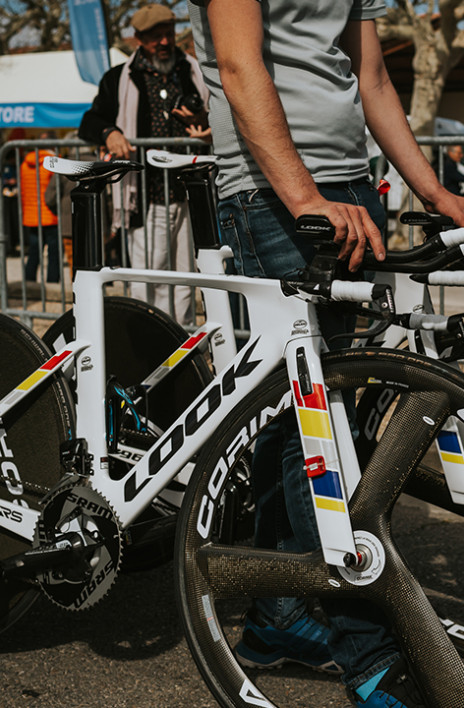
What next?
After a time trial, cyclists must hydrate themselves as they can't drink during this stage. They'll then go back on a turbo trainer to once again build up some sweat. This eliminates any lactic acid, a toxic waste product. They keep a flexible gear but maintain a certain pace in order to sweat. While some are warming down, it's back to Andy for a final word. "In a time trial, you need to face your fears. Ninety percent of the guys have moments of doubt. Ditto for an entire team. Everyone has to face each other's power.Each professional team would benefit from having a French championship winner. This was previously at the core of pro cycling, but doesn't seem to apply any more. Time trials are a pure test of ability. They reveal your power as well as your physical and mental capabilities. All pro cyclists need to master them."